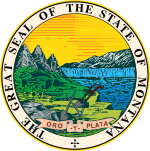
The 1978 United States Senate elections were held on November 7, in the middle of Democratic President Jimmy Carter's term. The 33 seats of Class 2 were contested in regular elections. Special elections were also held to fill vacancies.

The 1976 United States Senate elections was an election for the United States Senate. Held on November 2, the 33 seats of Class 1 were contested in regular elections. They coincided with Democrat Jimmy Carter's presidential election and the United States Bicentennial celebration. Although almost half of the seats decided in this election changed parties, Carter's narrow victory did not provide coattails for the Democratic Party. Each party flipped seven Senate seats, although, one of the seats flipped by Democrats was previously held by a Conservative.

The 1972 United States Senate elections were held on November 7, with the 33 seats of Class 2 contested in regular elections. They coincided with the landslide re-election of Republican President Richard Nixon. Despite Nixon's landslide victory, Democrats increased their majority by two seats. The Democrats picked up open seats in Kentucky and South Dakota, and defeated four incumbent senators: Gordon Allott of Colorado, J. Caleb Boggs of Delaware, Jack Miller of Iowa, and Margaret Chase Smith of Maine. The Republicans picked up open seats in New Mexico, North Carolina, and Oklahoma, and defeated one incumbent, William B. Spong Jr. of Virginia.

The 1964 United States Senate elections were held on November 3. The 33 seats of Class 1 were contested in regular elections. Special elections were also held to fill vacancies. They coincided with the election of President Lyndon B. Johnson by an overwhelming majority, to a full term. His Democratic Party picked up a net two seats from the Republicans. As of 2023, this was the last time either party has had a two-thirds majority in the Senate, which would have hypothetically allowed the Senate Democrats to override a veto, propose constitutional amendments, or convict and expel certain officials without any votes from Senate Republicans. In practice, however, internal divisions effectively prevented the Democrats from doing so. The Senate election cycle coincided with Democratic gains in the House in the same year.

James Edward Murray was an American politician and United States Senator from Montana, and a liberal leader of the Democratic Party. He served in the United States Senate from 1934 until 1961.
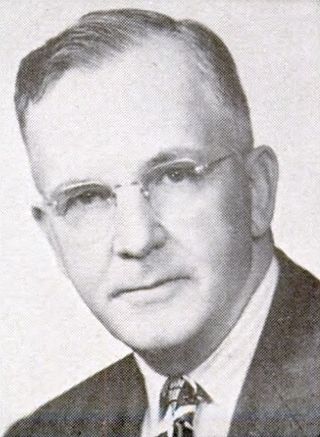
Wesley Abner D'Ewart was a U.S. Republican politician who served in the United States House of Representatives from Montana's 2nd congressional district from June 5, 1945, to January 3, 1955.

Roy Elmer Ayers was a U.S. Democratic politician. He served as a member of the United States House of Representatives and as the 11th Governor of Montana. He was the first governor of Montana to be born in what would become the state of Montana.

Arnold Olsen was a U.S. Democratic politician who served as the Attorney General of Montana from 1949 to 1957, and as a member of the United States House of Representatives from Montana's 1st congressional district from 1961 to 1971.
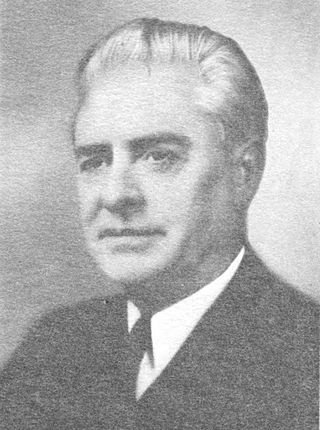
James Francis O'Connor was a U.S. Representative from Montana.

Scott Leavitt was a U.S. Representative from Montana. He served as chairman of the House Committee on Indian Affairs.

The 2014 congressional election in Montana was held on November 4, 2014, to elect the U.S. representative from Montana's at-large congressional district. Between 1993 and 2023, Montana had one at-large seat in the House.
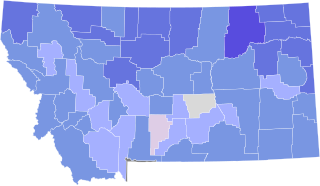
The 1930 United States Senate election in Montana took place on November 3, 1936. Incumbent United States Senator James E. Murray, who was first elected to the Senate in a special election in 1934, ran for re-election. He narrowly emerged from a competitive and close Democratic primary, wherein he was challenged by United States Congressman Joseph P. Monaghan, who represented Montana's 1st congressional district. In the general election, Murray was opposed by Thomas O. Larson, a State Senator and the Republican nominee, and Monaghan, who, after losing the primary, ran as an independent candidate. Murray ended up winning a second term, and his first full term, in a landslide, defeating both of his opponents by a comfortable margin.
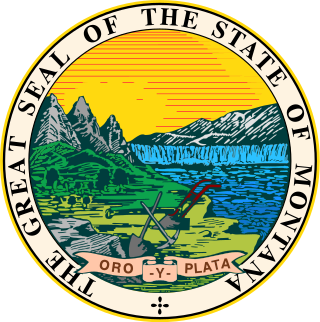
The 1942 United States Senate election in Montana took place on November 3, 1942. Incumbent United States Senator James E. Murray, who was first elected to the Senate in a special election in 1934 and was re-elected in 1936, ran for re-election. Following his victory in a competitive Democratic primary, Murray advanced to the general election, where he was opposed by former United States Attorney for the District of Montana Wellington D. Rankin, the Republican nominee and brother of representative Jeannette Rankin. In a closely fought election, Murray narrowly defeated Rankin to win re-election to his third term and his second full term in the Senate.

The 1948 United States Senate election in Montana took place on November 2, 1948. Incumbent United States Senator James E. Murray, who was first elected to the Senate in a special election in 1934 and was re-elected in 1936 and 1942, ran for re-election. After winning the Democratic primary, he faced Tom J. Davis, an attorney and the Republican nominee, in the general election. Following a narrow re-election in 1936, Murray significantly expanded his margin of victory and comfortably won re-election over Davis, resulting in him winning his fourth term and his third full term in the Senate.
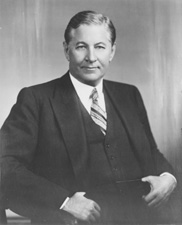
The 1954 United States Senate election in Montana took place on November 2, 1954. Incumbent United States Senator James E. Murray, who was first elected to the Senate in a special election in 1934 and was re-elected in 1936, 1942, and 1948, ran for re-election. After winning the Democratic primary against trivial opponents, he advanced to the general election, where he was opposed by Wesley A. D'Ewart, the Republican nominee and the United States Congressman from Montana's 2nd congressional district. A contentious and close election ensued, but ultimately, Murray was able to narrowly win re-election over D'Ewart to a final term in the Senate.

The 1960 United States Senate election in Montana took place on November 8, 1960. Incumbent United States Senator James E. Murray, who was first elected to the Senate in a special election in 1934 and was re-elected in 1936, 1942, and 1948, and 1954, declined to seek re-election, creating an open seat. United States Congressman Lee Metcalf won out in a crowded Democratic primary and faced off against former United States Congressman Orvin B. Fjare, who won in a similarly-crowded Republican primary. Following a close general election, Metcalf narrowly defeated Fjare to win his first term in the Senate.

The 1922 United States Senate election in Montana took place on November 7, 1922. Incumbent United States Senator Henry L. Myers, who was first elected to the Senate in 1910, and was re-elected in 1916, declined to seek re-election. Former United States Attorney Burton K. Wheeler won the Democratic primary and advanced to the general election, where he faced Carl W. Riddick, the United States Congressman from Montana's 2nd congressional district and the Republican nominee. Ultimately, Wheeler defeated Riddick comfortably and won his first term in the Senate.

The 1946 United States Senate election in Montana took place on November 5, 1946. Incumbent United States Senator Burton K. Wheeler, who was first elected to the Senate in 1922, and was re-elected in 1928, 1934, and 1940, ran for re-election. He was challenged in the Democratic primary by Leif Erickson, the Chief Justice of the Montana Supreme Court, and, following a close election, was narrowly defeated by Erickson. In the general election, Erickson faced State Senator Zales Ecton, the Republican nominee. Ultimately, Ecton defeated Erickson by a fairly wide margin, winning his first and only term in the Senate. Another Republican would not be elected Senator from Montana until 42 years later, when Conrad Burns narrowly won the 1988 election.

The 1920 United States Senate election in Oklahoma took place on November 2, 1920. Incumbent Democratic Senator Thomas Gore ran for re-election to a third term. However, he was defeated in the Democratic primary by Congressman Scott Ferris. In the general election, Ferris faced fellow Congressman John W. Harreld, the Republican nominee. Likely helped by Republican presidential nominee Warren G. Harding's victory in Oklahoma over Democratic nominee James M. Cox, Harreld defeated Ferris by a similar margin to Harding's.

The 2018 United States House of Representatives elections in Oklahoma were held on November 6, 2018, to elect the five U.S. representatives from the state of Oklahoma, one from each of the state's five congressional districts. The elections coincided with other elections to the House of Representatives, elections to the United States Senate and various state and local elections. Primary elections were held on June 26 and runoff elections were held two months later on August 28. The state’s U.S. House delegation Republican majority changed from 5-0 to 4-1. As of 2023 this is the only time since 2010 that Democrats won any house race in Oklahoma.

